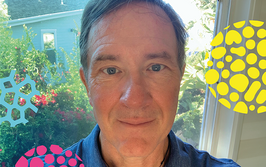Forensics: The Next Generation
How will modern genomics tools and other analytical breakthroughs drive forensic science?
In the late 1960s, the world was fascinated by the brave new future portrayed by science fiction books and TV shows that were filled with nifty gadgets, including sensors that could detect and analyze different lifeforms and devices that could instantly cure disease. Twenty years later, Sir Alec Jeffreys (University of Leicester, UK) developed a method to distinguish between individuals using variable regions in their DNA, and created the first forensic DNA typing kit. Much more recently, next generation sequencing companies have begun to release a new form of forensic kit that local police laboratories can use for the identification of humans using only traces of DNA left on beer glasses, bedsheets and broom handles. But these kits do more than just identify an individual.
The information content generated by such systems frankly boggles the mind; not only can it determine your identity, but it can also be used to uncover the genetic origins of your ancestors, phenotypic aspects of your appearance, and your family lineage. This new technology relies on the detection of single nucleotide polymorphisms – simple mutations that exist throughout the genome that correlate with various genetic and phenotypic features. Researchers and entrepreneurs are taking this technology to its ultimate limit by developing massive correlations using whole genome association studies to develop methods that can even reconstruct your facial features.
And that’s not all. Another new development in forensic analysis is the “Rapid DNA” initiative, which aims to develop instrumentation that automatically extracts, amplifies and genotypes DNA without human intervention. Once costs go down – as they certainly will – police agencies across the world can augment their tried and tested fingerprint systems with something much more sophisticated. Computer-based expert systems will then determine whether the biological profile was performed correctly, upload the information to a database and, within a few hours, notify police officers that the person being held at their station is actually a serial criminal wanted in two other jurisdictions.
The full consequences of this new technology are yet unclear, but are certainly worth speculation. But one can imagine a situation in which a DNA type under a murder victim’s fingernails is all that remains from a violent attack in some dark alleyway. The DNA type may not be in a database, but the genetic data recovered permits us to know that this person is part Caucasian, part southeast Asian, a male, overweight, between the ages of 24 and 30 years, a smoker, and balding. From the bacteria in his body fluids, we determine that he had a particular diet that was mainly vegetarian. We also obtain his facial features and can then prepare an image to compare with nearby security cameras. Very quickly, it is found that he is a regular customer in a vegan restaurant down the street and he is picked up and arrested in less than a week.
In another scenario, an anarchist bombs a train station in Europe and disappears. Some months later, arriving at customs in the USA, he is questioned and asked to provide a DNA sample via a cheek swab. The sample is placed in an automated analyzer and, 90 minutes later, his DNA profile is matched with a profile found on a piece of evidence from the bombing.
Should there be concern about privacy? Well, despite the fact that current forensic DNA databases have very little value in medical prediction, tight security still controls the records. Moreover, the forensic kits developed for next generation sequencing only target specific locations in the genome associated with identity, and do not directly access medical data – nor do they permit whole genome sequencing. And though there is still a possibility that some genome locations may produce associations with medical conditions, it is neither the object nor purpose of these databases. In my view, we have more important things to worry about, for it is far, far easier to obtain your medical records from hospital workers, and your buying habits from internet providers, than to access criminal databases.
The power of DNA to exclude the innocent and assist the jury in determination of guilt often fascinates people. To me this is the key issue. As a researcher, I apply my knowledge of analytical chemistry in the pursuit of better methods for human identification. My research group works with genetics, analytical chemistry, and biochemistry to exploit new developments in DNA sequencing, rapid PCR and epigenetics, which we hope someday will provide further assistance to victims of crime. More efficient methods of DNA analysis can result in transformative changes in the treatment of underserved groups, elevating them from victimization and marginalization. The criminal justice system is currently clogged with excessive backlogs and unanalyzed forensic evidence. New, more efficient DNA tests have the potential to make a difference. What can be more positive than that?
Not much more than a year after getting his PhD in Analytical Chemistry at the University of Wisconsin-Madison, McCord found himself working for Syntex Pharmaceuticals in the Bahamas and trying to figure out what to do about a job offer as a governmental research chemist in forensic science in Quantico, VA. He took it, left his beach house, and started working as a researcher developing methods using capillary electrophoresis for explosives residue. One day someone asked him, “would that thing work for DNA analysis?” The question led him to a strange and interesting journey into the world of forensic DNA typing, then on to academic positions at Ohio University and Florida International University, where he manages a large research group exploring forensic analytical and bioanalytical chemistry. “We still work on methods for explosives detection, but we now also use microfluidics, mass spectrometry and surface enhanced Raman spectroscopy in the lab. Our DNA group is moving into rapid PCR, microfluidics and next gen sequencing. We are motivated by the potential of analytical methods to assist victims of crime and make the world a better place,” he says.

















